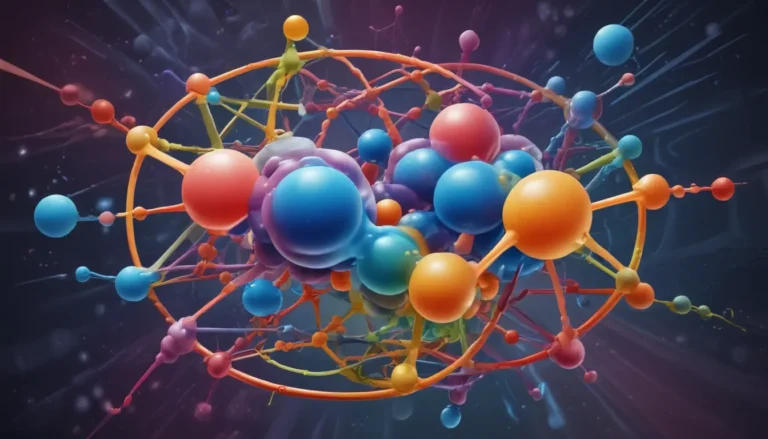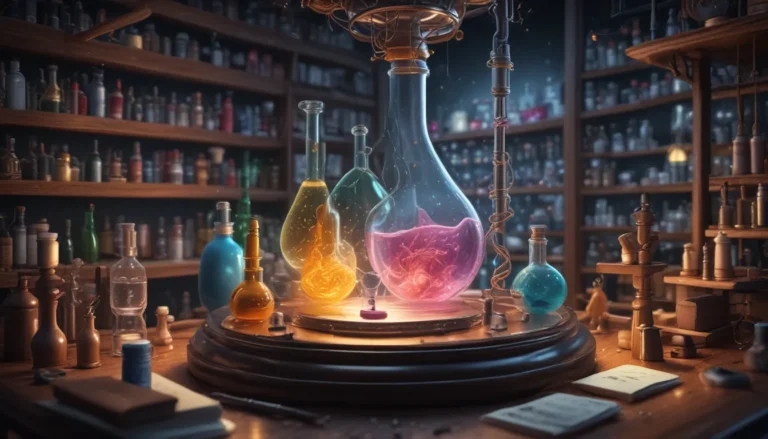A Note About Images: The images used in our articles are for illustration purposes only and may not exactly match the content. They are meant to engage readers, but the text should be relied upon for accurate information.
Chemistry is a realm filled with captivating molecules that shape the very fabric of our world. Among these fascinating entities, ligands stand out as key players in various chemical reactions and interactions. These dynamic molecules have the unique ability to bind to specific receptors or metal ions, influencing their behavior and function in profound ways. In this article, we will embark on an enlightening journey into the world of ligands, exploring their diverse structures, essential functions, and significant applications in the field of chemistry. Join us as we uncover 18 fascinating facts that highlight the significance of ligands and shed light on their crucial role in scientific discovery.
The Enigmatic World of Ligands
Ligands serve as matchmakers for metal atoms, playing a pivotal role in chemical reactions by influencing their behavior and properties. These molecules are like secret agents in the chemical world, determining the shape, stability, and reactivity of coordination complexes. Let’s delve deeper into the captivating realm of ligands and discover the mysteries that make them indispensable in the world of chemistry.
Unraveling the Role of Ligands in Chemistry
-
Key Role in Chemical Reactions: Ligands are molecules or ions that bind to a central metal atom or ion, forming a complex. This interaction significantly impacts the behavior and properties of the complex, making ligands essential components in various chemical reactions.
-
Diverse Classification of Ligands: Ligands can be classified into different types, such as monodentate ligands that bind through a single atom and multidentate ligands, also known as chelating ligands, which can form multiple bonds with the metal atom.
-
Electron Donation: A primary function of ligands is to donate electrons to the metal atom, stabilizing the complex and influencing its reactivity and properties.
-
Geometry Determination: The arrangement of ligands around the metal atom plays a crucial role in dictating the overall shape and geometry of the complex, impacting its stability and chemical behavior.
Ligands in Action: Applications and Impact
-
Catalytic Reactions: Ligands are used in catalysis to enhance the reactivity of metal centers by modifying the electronic environment around the metal atom, promoting or inhibiting certain reactions.
-
Color Change Phenomenon: Certain ligands can change the color of a complex by absorbing specific wavelengths of light, a phenomenon commonly observed in transition metal complexes with applications in drug discovery and materials science.
-
Coordination Chemistry: Ligands play a vital role in coordination chemistry, focusing on the study of complexes formed by the interaction between ligands and metal atoms or ions, with diverse applications in various fields.
-
Solubility Enhancement: By forming complexes with metal ions, ligands can increase the solubility of otherwise insoluble compounds, utilized in areas such as environmental remediation and pharmaceutical formulations.
Exploring the Versatility of Ligands in Different Fields
-
Detection Sensors: Some ligands are designed to specifically bind with certain metal ions, serving as sensors or indicators for their presence in analytical chemistry and environmental monitoring.
-
Bioavailability Modulation: In medicinal chemistry, ligands play a crucial role in the design of metal-based drugs by coordinating to the metal center to modulate the drug’s effectiveness, bioavailability, and targeting specificity.
-
Stereochemical Properties: Depending on the arrangement of ligands around the metal center, complexes can exhibit different stereochemical properties, such as cis-trans isomerism and optical activity.
-
Organic vs. Inorganic Ligands: Ligands can be organic, containing carbon-based structures, or inorganic, consisting of elements other than carbon, allowing them to interact with a wide range of metal ions.
Unlocking the Intricacies of Ligand Interactions in Chemistry
-
Ligand Exchange Reactions: In coordination chemistry, ligand exchange reactions are common, where one ligand can be replaced by another, leading to the formation of new coordination complexes with distinct properties.
-
Influence on Redox Properties: By coordinating to the metal center, ligands can alter the redox properties of metal ions, affecting their ability to accept or donate electrons in chemical reactions.
-
Binding Affinities: Not all ligands have the same binding affinity for metal ions, with some forming stronger bonds than others, crucial in selective metal ion binding and separation processes.
-
Bridging Molecules: Ligands can act as bridging molecules between metal centers in some complexes, creating extended networks or clusters vital in the formation of coordination polymers and metal-organic frameworks.
Innovative Applications of Ligands: From Pharmaceuticals to Nanomaterials
-
Ligand Substitution Reactions: Ligands can undergo ligand substitution reactions, where they are replaced by other ligands, resulting in the formation of new coordination complexes with different properties.
-
Synthesis of Nanomaterials: By carefully selecting ligands and controlling reaction conditions, researchers can synthesize nanoscale materials with specific structures and properties, highlighting the crucial role of ligands in directing the growth and stabilization of these materials.
Conclusion: Embracing the Vitality of Ligands in Scientific Exploration
The captivating world of ligands unfolds before us, revealing a tapestry of intricate molecular interactions that shape the foundation of modern chemistry and scientific discovery. From their essential role in coordination chemistry to their diverse applications in catalysis, drug design, and materials science, ligands continue to inspire and drive innovation in various fields.
As we bid farewell to this mesmerizing journey through the realm of ligands, let us carry forward a deeper appreciation for these remarkable molecules and their profound impact on the world of chemistry and biology. Embrace the mysteries, unravel the complexities, and embark on a continuous quest for knowledge in the captivating realm of ligands.
FAQs: Navigating the World of Ligands
Q: What is a ligand?
A: A ligand is a molecule or ion that can bind to a central atom or ion to form a complex, playing a crucial role in various chemical reactions and interactions in the field of chemistry.
Q: What are some applications of ligands?
A: Ligands have diverse applications, ranging from catalysis and coordination chemistry to drug design, environmental remediation, and the synthesis of nanomaterials with specific properties.
Q: How do ligands impact biological systems?
A: Ligands play a significant role in biological systems by binding to proteins, enzymes, or receptors, influencing physiological processes and serving as key players in drug discovery and development.
Q: What are the different types of ligands?
A: Ligands can be classified into various types, including monodentate, bidentate, polydentate, and chelating ligands, each with unique properties and functions in chemical reactions and complex formations.
Q: How can ligands be utilized in the synthesis of nanomaterials?
A: By carefully selecting ligands and controlling reaction conditions, researchers can direct the growth and stabilization of nanoscale materials, showcasing the pivotal role of ligands in the synthesis of materials with specific structures and properties.
In the realm of chemistry, ligands shine as beacons of discovery and innovation, guiding us through the intricate dance of molecular interactions and fueling scientific exploration. Embrace the fascination, dive into the depths of ligand chemistry, and let the captivating world of ligands inspire your journey in the realm of scientific discovery.






